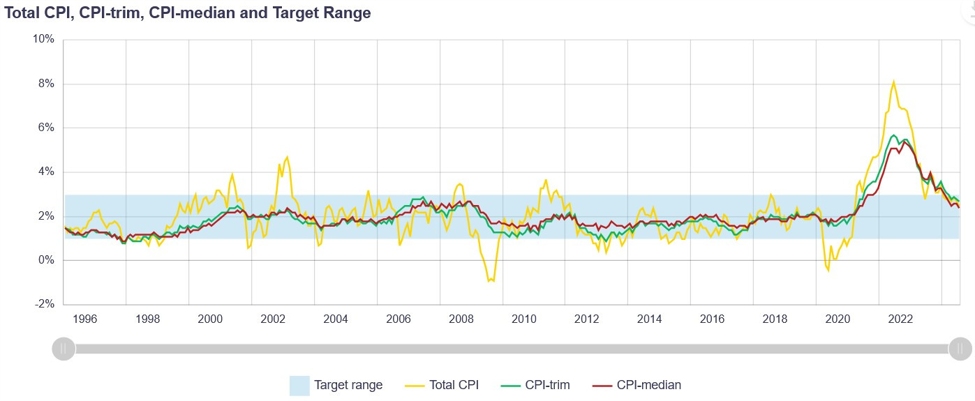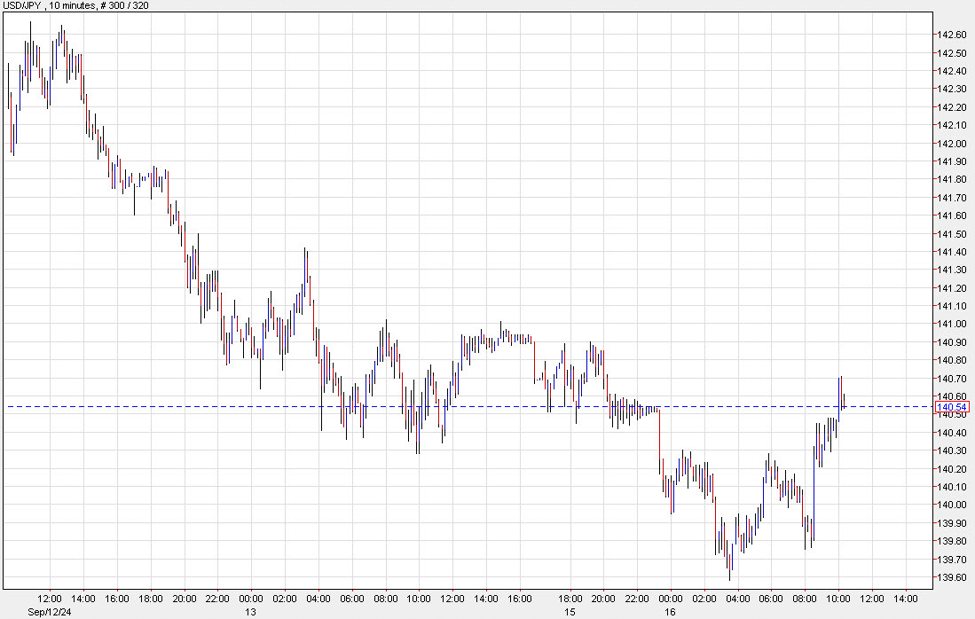UPCOMING
EVENTS:
- Monday: New Zealand Companies PMI.
- Tuesday: Eurozone ZEW, Canada CPI, US Retail Gross sales, US
Industrial Manufacturing and Capability Utilization, US NAHB Housing Market
Index. - Wednesday: UK CPI, US Housing Begins and Constructing Permits,
BoC Abstract of Deliberations, FOMC Coverage Resolution. - Thursday: New Zealand Q2 GDP, Australia Labour Market
report, BoE Coverage Resolution, US Jobless Claims. - Friday: Japan CPI, PBoC LPR, BoJ Coverage Resolution, UK
Retail Gross sales, Canada Retail Gross sales.
Tuesday
The Canadian CPI
Y/Y is predicted at 2.1% vs. 2.5% prior, whereas the M/M measure is seen at 0.0%
vs. 0.4% prior. As all the time, focus can be on the underlying inflation measures.
The Trimmed Imply CPI Y/Y is predicted at 2.5% vs. 2.7% prior and the Median CPI
Y/Y is seen at 2.3% vs. 2.4% prior.
The BoC is
anticipated to chop charges by 25 bps at each the final two conferences left for this
12 months, however there’s additionally an opportunity that the central financial institution delivers larger charge cuts
if development and inflation had been weaker than projected as Governor Macklem talked about final week.
Canada Inflation Measures
The US Retail
Gross sales M/M is predicted at 0.2% vs. 1.0% prior, whereas the Ex-Autos M/M measure is
seen at 0.3% vs. 0.4% prior. The main focus can be on the Management Group determine
which is predicted at 0.2% vs. 0.3% prior.
Shopper spending
has been secure which is one thing you’d count on given the constructive actual
wage development and resilient labour market. We’ve additionally been seeing a gradual pickup
within the UMich Consumer
Sentiment which suggests
that customers’ monetary state of affairs is secure/enhancing.
US Retail Gross sales YoY
Wednesday
The UK CPI Y/Y is
anticipated at 2.2% vs. 2.2% prior, whereas the M/M measure is seen at 0.3% vs.
-0.2% prior. The Core CPI Y/Y is predicted at 3.5% vs. 3.3% prior, whereas the M/M
determine is seen at 0.4% vs. 0.1% prior.
The market expects
the BoE to maintain charges unchanged on the upcoming assembly after which reduce charges by
25 bps in November and December.
UK Core CPI YoY
The consensus
amongst economists sees the Fed slicing charges by 25 bps. The market pricing
although is evenly cut up between a 25 and 50 bps reduce. Some folks say that
beginning with a typical 25 bps could be higher as a result of the financial system remains to be
high-quality, and 50 bps may be seen as panicky.
Central banking is
additionally about danger administration although. The market pricing is giving the Fed a pleasant
alternative to ship a 50 bps “insurance coverage reduce” with out shocking. Issues
would have been a lot totally different if we had one thing like 30% possibilities for a
50 bps reduce and 70% for a 25 bps one.
The Fed didn’t
have the prospect to see the labour market report final July as the info was
launched two days later. Possibly, if they’d the info per week earlier, we’d
have seen them slicing by 25 bps again then already after which persevering with with 25
bps cuts for the following conferences.
Fed Chair Powell
made it clear on the Jackson Gap Symposium that they won’t tolerate extra
labour market weakening and they’re going to do every thing they’ll to maintain it sturdy.
Contemplating every thing, beginning with a 50 bps reduce makes rather more sense.
The Fed can then
present that it was simply an insurance coverage reduce by way of its Abstract of Financial Projections
and Powell can double down on that on the Press Convention. Talking of the
SEP, the market is anticipating the Fed to ship not less than 100 bps of easing by
year-end. The Fed can reduce by 50 bps after which venture two extra 25 bps cuts by
year-end.
Additional out, the
market expects the Fed to ship 150 bps of easing in 2025 which appears too
aggressive for the time being. To sum up, I personally count on the Fed to chop charges
by 50 bps, however ultimately what’s essential is that the Fed is lastly beginning
to ease its coverage and the magnitude can be formed by the info within the subsequent
months.
Federal Reserve
Thursday
The Australian
Labour Market report is predicted to point out 30.0K jobs added in August vs. 58.2K
in July and the Unemployment Charge to stay unchanged at 4.2%. The market
expects the RBA to ship the primary charge reduce in February 2025, however the
possibilities may be introduced ahead to December 2024 if the info
had been to disappoint within the subsequent months.
Australia Unemployment Charge
The BoE is
anticipated to maintain charges unchanged at 5.00%. The expectations for such a transfer
have been formed by comparatively sturdy knowledge with PMIs firmly in growth,
inflation moderating at a sluggish tempo and the unemployment charge ticking decrease.
The market then expects the central financial institution to chop by 25 bps in November and
December.
Financial institution of England
The US Jobless
Claims continues to be one of the vital essential releases to comply with each week
because it’s a timelier indicator on the state of the labour market.
Preliminary Claims
stay contained in the 200K-260K vary created since 2022, whereas Persevering with Claims
have been on a sustained rise (though they’ve improved lately) displaying that
layoffs aren’t accelerating and stay at low ranges whereas hiring is extra
subdued.
This week Preliminary
Claims are anticipated at 230K vs. 230K prior, whereas there’s no consensus for Persevering with
Claims on the time of writing though the prior launch confirmed a rise to
1850K.
US Jobless Claims
Friday
The Japanese Core
CPI Y/Y is predicted at 2.8% vs. 2.7% prior. Inflation has been selecting up
alongside wage development that are two of a very powerful elements for the BoJ. Nonetheless,
the BoJ is predicted to maintain charges unchanged this time round and doubtlessly
ship one other charge hike by the top of the 12 months.
Japan Core CPI YoY
The BoJ is
anticipated to maintain rates of interest unchanged at 0.25%. The main focus can be on the
Press Convention because the markets can be attentive to alerts or hints on the
timing of the following charge hike.
A number of BoJ
officers stored the speed hikes on the desk as they wish to normalise coverage to
a extra impartial stance. Markets instability has been a significant concern for the central
financial institution, so they may probably await the Fed to be a bit extra down the street in
its easing cycle earlier than tightening coverage additional.
Financial institution of Japan
The PBoC is
anticipated to maintain the 1 12 months and 5 12 months LPR charges unchanged at 3.35% and three.85%
respectively. The Chinese language financial knowledge hasn’t been precisely good and
deflationary dangers stay excessive. Chinese language officers ought to actually go more durable on
financial coverage easing and convey actual charges down from the present excessive ranges.
Folks’s Financial institution of China





